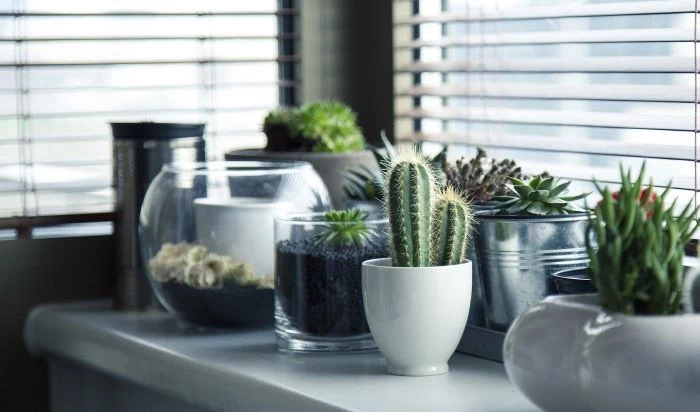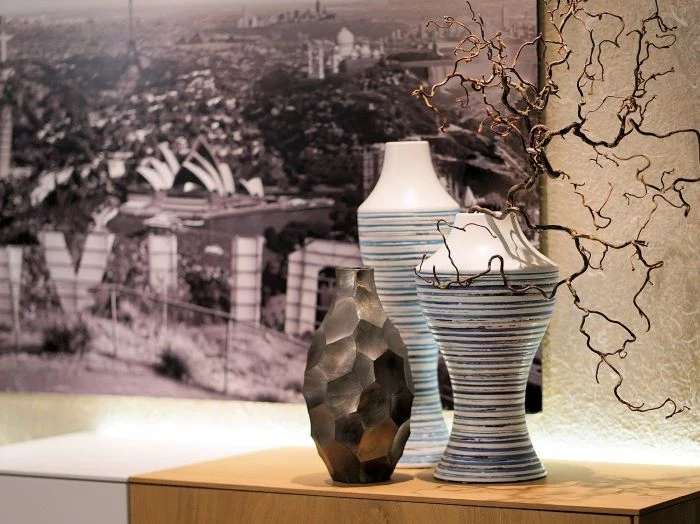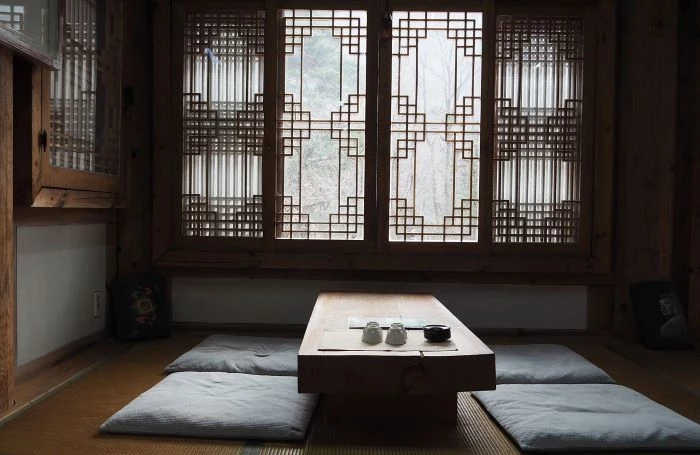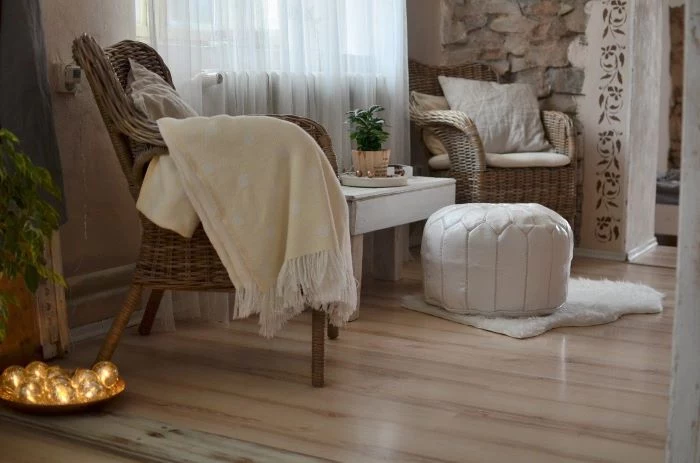Your Home’s True Style: A Pro’s Guide to Skipping the Trends
I’ve spent a lot of my career helping people create spaces they love, from traditional homes to sleek, contemporary new builds. And if there’s one truth I’ve learned, it’s this: a home’s style isn’t about chasing trends. It’s about building a place that actually supports your life. Those glossy magazine photos? They’re great for inspiration, but they’re not a rulebook. Frankly, they often show spaces that are stunning but not exactly built for, you know, living in.
In this article
So many people get overwhelmed by all the design labels out there. Is your home ‘Modern’ or ‘Bohemian’ or ‘Transitional’? It feels like you have to pick a team. My goal here is totally different. I want to share the practical framework I use with my own clients—a way to look at your home and your life to make choices that feel authentic and will last for years.
Let’s move beyond the labels and get to the core of what makes a space feel good. That way, you can create a home that truly feels like it’s yours.

The Building Blocks of Any Great Room
Before we even whisper the word ‘style,’ we have to talk about the raw ingredients of design: light, color, texture, and layout. The pros spend their entire careers mastering how these elements play together. Getting a handle on the basics will completely change how you see your own home. It’s the difference between just copying a picture and creating a real feeling.
Let There Be Light (The Right Kind!)
Light is, without a doubt, the most powerful tool you have. It messes with everything from your mood to how you see color. The very first thing I do on any project is just watch the light. I’ll hang out in a space at different times of day to see how the sun moves through the rooms. That’s how you know where the perfect spot for a reading chair or a dining table is.

You’re working with two kinds of light: natural and artificial. Natural light is always changing. North-facing rooms get cool, steady light that’s awesome for a home office. South-facing rooms get blasted with warm, bright light all day, which can make colors pop. East-facing rooms are glorious in the morning, and west-facing rooms practically glow at sunset.
Knowing this is key for picking paint. A beautiful gray that looks warm and inviting in a south-facing room can suddenly look cold and sterile in a north-facing one. This is why I always tell people to test paint samples on different walls in the same room. And don’t just paint a tiny swatch! Get a sample pot for $5-$10 and paint a big square, at least 3 feet by 3 feet. Better yet, paint it on a large piece of white poster board. That way, you can move it around the room and see how it looks in the morning, at noon, and at night before you commit.

Artificial lighting is your chance to really control the mood. I think about it in three simple layers, which is pretty standard practice in the industry:
- Ambient Lighting: This is your main light source—the overhead stuff like recessed lights or a chandelier. It just gives the room a general, even glow.
- Task Lighting: This is focused light for getting things done. Think under-cabinet lights in the kitchen for chopping veggies, or a reading lamp right next to your favorite armchair.
- Accent Lighting: This is the fun stuff! It’s all about highlighting things you want to show off, like a light pointed at a piece of art or tucked behind a big plant.
Oh yeah, and the color of the lightbulb itself is critical. It’s measured in Kelvins (K). A lower number (around 2700K) gives off that warm, cozy, yellowish light we all love for living rooms and bedrooms. A higher number (4000K-5000K) produces a cooler, blue-white light that’s better for kitchens and bathrooms where you need to see clearly. Good quality LED bulbs will always have the Kelvin rating on the box, and a pack usually runs between $15 and $25. Using the wrong one can make a gorgeous room feel like a hospital waiting room. No thanks.

More Than Just a Pretty Color
Color is so personal. It can make you feel energized or calm you right down. While there’s a whole science to color theory, what really matters is how it makes you feel. Still, some general principles are helpful. Warm colors like reds and oranges can make a huge room feel cozier, while cool colors like blues and greens can make a tiny room feel bigger.
A simple pro technique for building a color palette is the 60-30-10 rule. It’s a super easy way to create balance.
- 60% is your main color. This is usually your wall color.
- 30% is your secondary color. Think furniture, curtains, or maybe an accent wall.
- 10% is your accent color. This is for the little things—pillows, art, and decor.
For example, you could have a living room with 60% of the space painted a warm, soft gray. Your secondary color, at 30%, could be a deep navy blue sofa and curtains. Then, for your 10% accent, you’d toss in some throw pillows, a vase, and a piece of art with pops of a bright mustard yellow. See? It just works.

But texture is just as important! A room with only flat, smooth surfaces can feel really sterile. Mixing textures adds depth and warmth. Just imagine a living room with a slick leather sofa, a chunky knit blanket, a rough wooden coffee table, and a soft wool rug. That mix of sensations is what makes a room feel rich and complete. When I’m shopping, I literally run my hands over everything. The feel of a fabric tells you so much.
Function First: How a Room Flows
A beautiful room that’s a pain to live in is a failed design. Period. Before you buy a single thing, think about how you’ll actually use the space. The main pathways in your home should be at least 36 inches wide so you can move around without bumping into things. It’s a standard guideline for a reason—it just feels right.
Quick Win: Go to your living room right now with a tape measure. Is the main path to your sofa at least 36 inches wide? If not, try nudging that coffee table or side chair just a few inches. See? You’re already thinking like a designer!
In kitchens, we often talk about the ‘work triangle,’ which connects the sink, the fridge, and the stove. The idea is to keep them close enough to be efficient but not so close that you feel boxed in. It’s a classic principle because it’s incredibly practical.
For any room, I seriously suggest making a floor plan. You can use old-fashioned graph paper or a free online tool like Roomstyler or SketchUp Free. Measure your room, then make little paper cutouts for your furniture (to scale!). This is how you discover that the giant sofa you fell in love with will completely block the door. It’s a simple step that has saved my clients from so many expensive mistakes.
Let’s Talk About Actual Styles (Without the Pressure)
Okay, now that we’ve got the foundations, we can talk styles. Think of these as established recipes—you can follow them, or you can just borrow an ingredient or two that you like.
The Timeless Classics: Traditional and Transitional
Traditional design is rooted in classic European decor. It’s all about order, symmetry, and elegant details. The furniture often features dark, finished woods, and the fabrics are rich—think silks and velvets with floral or striped patterns. It feels calm and orderly, but heads up, it can feel a bit formal if you’re not careful.
Transitional is the perfect middle ground and, honestly, it’s probably the most popular style in homes today. It blends the comfort of Traditional with the clean lines of Modern. This is what I suggest for clients who have, say, an antique family heirloom but want their home to feel fresh and current. You might pair a classic sofa with a sleek metal-and-glass coffee table. The color palette is usually neutral and calm, which lets both the old and new pieces shine. You can find great examples of this style at stores like Pottery Barn or Crate & Barrel.
- Get the Look for Less: You can find furniture with traditional shapes at thrift stores all the time. A coat of paint can instantly modernize an old, dark-wood end table. For transitional, focus on neutral paint and curtains, then invest in one or two quality pieces.
People often get ‘Modern’ and ‘Contemporary’ confused. Modern design grew out of a philosophy that form should follow function. It favored new materials, clean lines, geometric shapes, and very little extra fluff.
Minimalist design takes that idea and strips it down even further. It’s about creating a serene space with only the most essential elements. Every single object has a purpose. But a minimalist room isn’t empty; it’s just highly intentional. To be frank, true minimalism is tough. It demands smart storage and a real commitment to not accumulating clutter.
Scandinavian design is like a softer, cozier version of Modernism. It comes from Nordic countries, where long, dark winters meant that home interiors needed to be bright, warm, and connected to nature. It features light wood floors, white or pale gray walls, and simple, functional furniture. There’s a huge emphasis on natural materials like wool and linen and a focus on ‘hygge’—that Danish concept of pure coziness. It’s an incredibly livable and popular style for a reason.
To make sense of these three, think of it this way:
- Color Palette: Modern often uses bold, primary colors alongside neutrals. Minimalist sticks to a very tight palette of black, white, and gray. Scandinavian is all about soft whites, grays, and natural tones with maybe some muted, dusty pastels.
- Key Materials: Modern loves plastic, steel, and plywood. Minimalist focuses on high-quality, simple materials with no fuss. Scandinavian design is all about light woods (like birch and pine), wool, linen, and shearling.
- Overall Vibe: Modern feels structured and intentional. Minimalist feels calm and almost meditative. Scandinavian feels cozy, inviting, and effortlessly chic. For the Scandi look, IKEA is obviously the go-to, while stores like West Elm are great for modern pieces.
Character and History: Industrial, Rustic, and Farmhouse
These styles are all about celebrating raw materials and a sense of history. Industrial design gets its look from old factories and warehouses. It embraces things other styles try to hide, like exposed brick, ductwork, and concrete floors. A common problem I’ve seen is that these raw surfaces can be major dust magnets. A quick tip: always use a good-quality sealant on exposed brick or concrete. It keeps the look but makes the space much easier to clean.
Rustic design is all about bringing the outdoors in with natural, unrefined materials like raw wood beams and stone fireplaces. The furniture is usually simple and chunky. From my experience, you have to be careful with reclaimed wood. If it’s not properly treated, it can warp or even harbor insects. Always buy from a trusted supplier who kiln-dries their wood.
Modern Farmhouse is a more polished, contemporary take on rustic style. It’s more about evoking a feeling of simple, wholesome living than actually living on a farm. You’ll see shiplap walls, big apron-front sinks, and lots of neutral colors. The key is to avoid turning your home into a collection of clichés. A few well-chosen farmhouse pieces are much more powerful.
- Get the Look for Less: For an Industrial vibe, you don’t need a real brick wall. There are amazing faux-brick panels and peel-and-stick wallpapers out there now. You can find them at Home Depot for around $30-$50 per panel.
- Modern Farmhouse Starter Kit: Want to dip your toe in? Look for a drop-in apron-front sink (you can find them for under $400 now), some simple black metal light fixtures or cabinet pulls ($50-$200), and a large, neutral jute rug ($150-$500 depending on size).
How to Actually Pull It All Together
Okay, so you have some ideas. Now what? These are the techniques I use on every single project to make sure the final space looks cohesive and professional.
Create a Mood Board
This is my first step, always. A mood board is just a collage—digital on Pinterest or physical with magazine cutouts and fabric swatches—that captures the feeling you’re going for. It’s not a shopping list; it’s a guide. As you collect images, you’ll start to see patterns. This board becomes your North Star. When you’re out shopping and tempted by something, you can ask, “Does this fit my mood board?” It’s a lifesaver for staying focused.
The Art of Mixing (and a Personal Confession)
Almost no one lives in a home that’s 100% one style. The most interesting spaces are a mix. The trick is to find a common thread. You could mix furniture from different eras but keep the color palette consistent. Or use different styles that all share clean, simple lines. I once had a client with a collection of very ornate, heavy antique furniture. It felt a bit stuffy. We painted the walls a crisp white, brought in a simple modern sofa, and hung a huge piece of abstract art. The contrast made her antique pieces look like incredible sculptures. It totally worked.
I’ll admit, early in my career, I made the mistake of not finding that common thread. I tried to force a sleek, modern lamp into a very rustic room, and it just looked… wrong. It stuck out like a sore thumb because it didn’t share a color, shape, or material with anything else. It was a good lesson: contrast is great, but chaos is not.
The Secret: Scale and Proportion
This is where so many DIY designs go sideways. A common mistake is putting a tiny rug in a huge living room. It makes the furniture look like it’s floating on a little island. Pro tip: the front legs of your sofa and chairs should always be on the rug. Another classic slip-up is using small, delicate furniture in a room with soaring ceilings. The furniture just gets lost. This is why that floor plan exercise is so important!
The Real Talk: Budgets, Safety, and When to Call for Help
A great project isn’t just about how it looks. It’s about planning, staying safe, and knowing your limits.
Safety First! What You Should Never, Ever DIY
I’m a huge fan of rolling up your sleeves. Painting a room or assembling furniture is super satisfying. But some jobs must be left to licensed pros. This is non-negotiable.
- Electrical Work: Faulty wiring is a top cause of house fires. Hire a licensed electrician.
- Plumbing Work: A tiny leak behind a wall can cause thousands in mold damage. Hire a licensed plumber.
- Structural Changes: Never, ever remove a wall without consulting a structural engineer or qualified contractor. What looks like a simple partition could be holding up your house.
By the way, this kind of work almost always requires a permit. Not sure if you need one? Just call your local town or city building department. It’s usually a quick, free phone call, and they’ll tell you exactly what’s required. It’s so much better to ask than to get a fine or, worse, create an unsafe situation.
Budgeting for Reality
Let’s be real: this stuff costs money. A living room refresh could cost $2,000 for paint, a new rug, and some accessories, or it could easily top $20,000 for all new high-end furniture and professional labor. Be honest about your budget from the start. And here’s a rule I live by: always, always set aside a contingency fund of at least 15-20% for surprises. Trust me, there are always surprises.
Finding the Right Pro
If the project feels too big, it’s time to call for help. But who do you call?
- An Interior Decorator focuses on the finishes—paint, furniture, lighting, and accessories.
- An Interior Designer often has more formal training and can do everything a decorator does, plus space planning, creating technical drawings, and working with contractors.
- An Architect designs buildings and is necessary for new construction or a major renovation that changes the structure of your home.
No matter who you hire, check their references and look at their portfolio. The most important thing is finding someone you can communicate with clearly.
Your First Step (Yes, Right Now)
Creating a home you love is a journey of discovery. Use these styles as inspiration, not a strict rulebook. Focus on how you want your home to feel. By understanding the basics and planning carefully, you can make a space that’s not just beautiful, but is a true reflection of you.
Feeling inspired but not sure where to start? Try this weekend: Pick one small corner of your home—a reading nook, the entryway, a spot in your bedroom. Take 30 minutes and create a mini mood board just for that space. Pull 5-10 images online that capture the feeling you want. Notice any common colors or textures? That’s it. That’s your first step. You’re already on your way.









